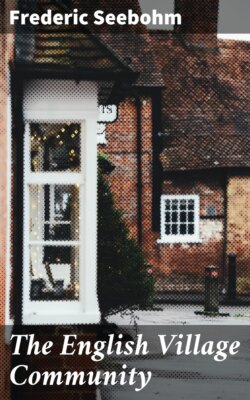Читать книгу The English Village Community - Frederic Seebohm - Страница 16
На сайте Литреса книга снята с продажи.
ОглавлениеWith exceptional variations the manors are all of one type.
The chief of these is that in many places in Cambridgeshire and Huntingdonshire the holdings of the villani, instead of being described as virgates and half-virgates, are described by their acreage. There are so many holders of 30, 20, 15, 10, or other number of acres each. They are not the less in grades, with equality in each grade, but the holdings bear no distinctive name.
There is also in these counties a class of tenants, partly above the villani, called sochemanni, which we [p035] shall find again when we reach the Domesday Survey. But upon exceptional local circumstances it is not needful to dwell here.
The fact is, then, that in the Hundred Rolls of Edward I. there is disclosed over the much wider area of five midland counties almost precisely the same state of things as that which existed in the manor of Winslow late in the reign of Edward III. That manor was under the ecclesiastical lordship of an abbey, but here in the Hundred Rolls the same state of things exists under all kinds of ownership. Manors of the king or the nobility, of abbeys, and of private and lesser landowners, are all substantially alike. In all there is the division of the manor into demesne land and land in villenage. In all the mass of the land in villenage is held in the grades of holdings mostly called virgates and half-virgates, with equality in each grade both as to the holding and the services. In all alike are found the smaller cottage holdings, also in villenage; and lastly, in all alike there are the free tenants of larger or smaller portions of the demesne land.
The open field system is the shell of serfdom.
If the picture of a manor and its open fields and virgates or yard-lands in villenage—i.e. both of the shell and of the community in serfdom inhabiting the shell—drawn in detail from the single Winslow example, has thrown light upon the Hundred Rolls, these latter, embracing hundreds of manors in the midland counties of England, give the picture a typical value, proving that it is true, not for one manor only, but, speaking generally, for all the manors of central England.
They also give additional information on the relation [p036] of the holdings to the hide, and reveal more clearly than the Winslow manor rolls the nature of the serfdom under which the villein tenants held their virgates. Before passing from the Hundred Rolls it will be worth while to examine the new facts they give us, and to devote a section to an examination of the services.
